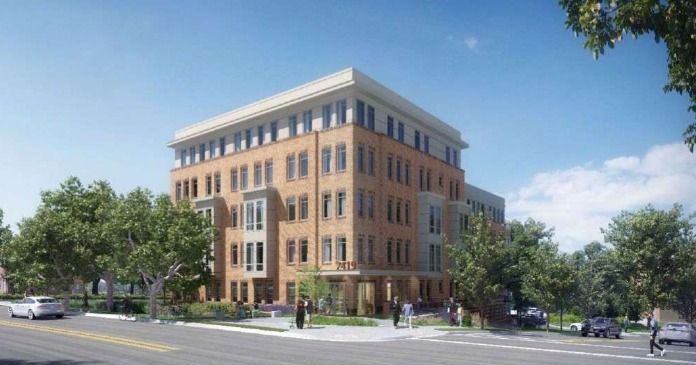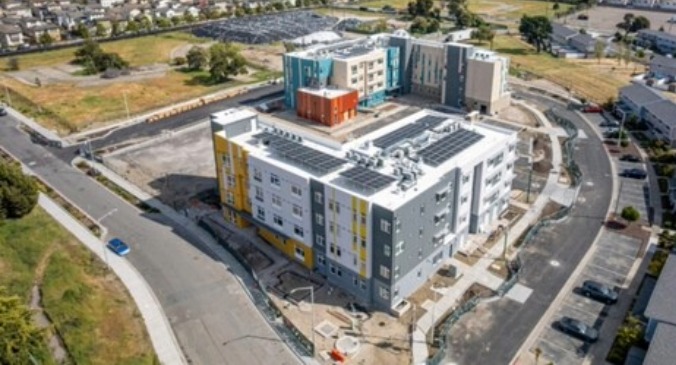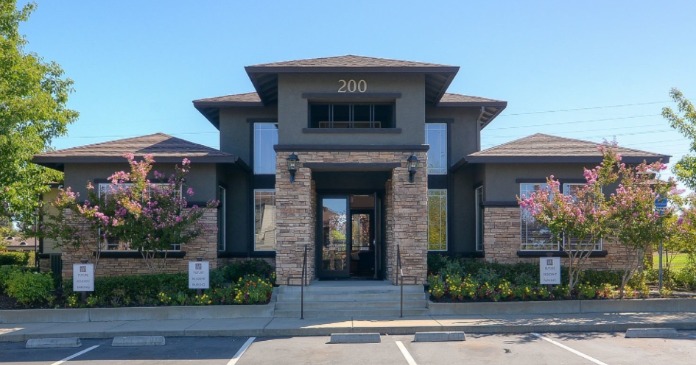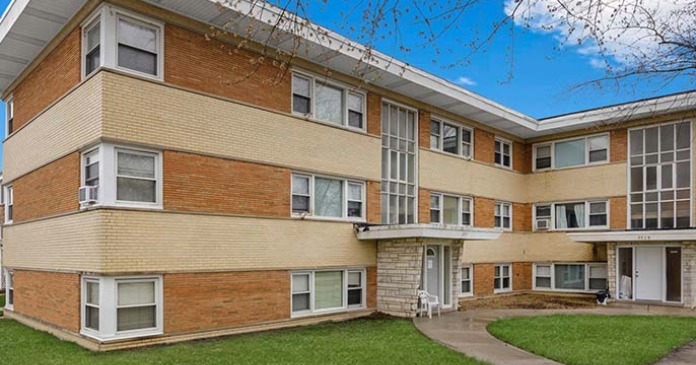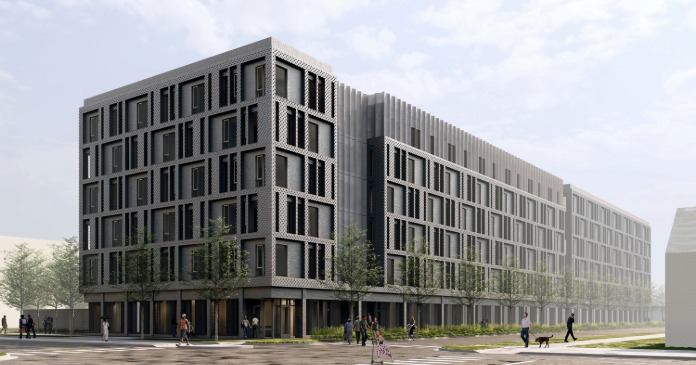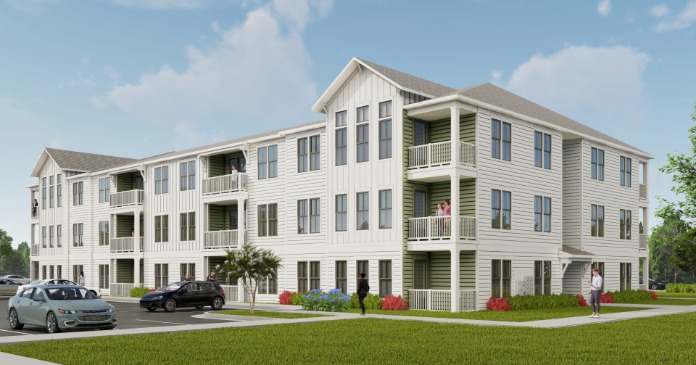The Employment Situation Report from the Bureau of Labor Statistics (BLS) stated that the economy experienced strong overall employment growth in March. However, the employment levels for only 2 of the 4 multifamily-related job categories we track were reported to be higher than the preliminary levels reported last month.
Overall employment continues higher
The BLS reported that total seasonally adjusted non-farm employment increased by 228,000 jobs to 159,398,000 jobs in March, based on their survey of business establishments. This is well above the monthly average employment gain of 157,000 jobs over the last 12 months. However, last month’s employment level was revised lower in this month’s report, falling by 48,000 jobs.
The BLS household survey reported that the US unemployment rate rose to 4.2 percent. However, when computed to 2 decimal places, the unemployment rate rose from 4.14 percent to 4.15 percent, a minimal increase. The household survey found that the number of employed people was 163,508,000. This is 201,000 people more than the figure reported last month. The number of unemployed people was 7,083,000, up 31,000 from last month’s reported figure.
The household survey also found that the number of people in the civilian labor force was 170,591,000, up by 232,000. The labor force participation rate rose marginally to 62.48 percent. It had been at 63.33 percent before the pandemic. Recovering that 0.85 percent decline in the labor force participation rate would bring 2.31 million more people into the workforce.
The first chart shows the history of total employment based on the survey of business establishments since January 2015. The chart also shows the employment growth trend line based on employment growth between January 2015 and February 2020. It shows that employment is now 2.8 percent lower than it would have been if employment growth had continued to follow the pre-pandemic trend.
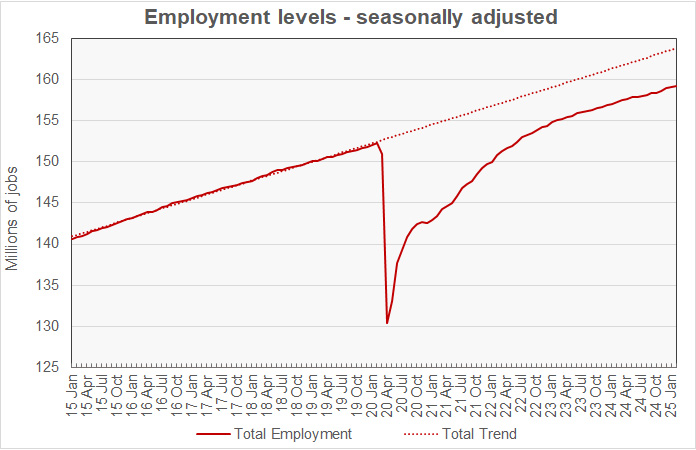
Tracking multifamily employment
The BLS reported more detailed employment information on four job categories of interest to the multifamily industry. These are employment as residential construction workers, as specialty trades within residential construction, as residential property managers and as lessors of residential buildings. As usual, some of the data was reported with a one month delay, so the latest figures for the latter two categories are for the month of February.
Residential construction trades employment lower
The next chart shows the history of the levels of employment since 2015 in the two construction jobs categories we track.
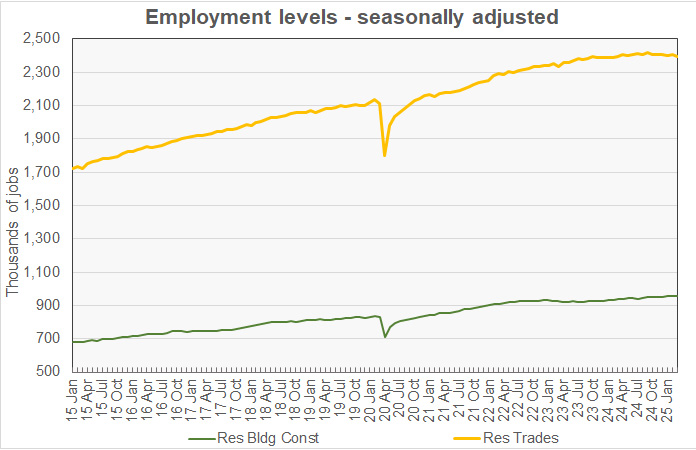
Employment in residential building construction in March, usually with general contractors, was reported to be up by 3,100 jobs. However, the prior month’s employment level was revised lower by 300 jobs so reported employment in this category is 2,800 jobs higher than the preliminary value reported last month. Employment in this category is now 957,900 jobs, up 1.9 percent year-over-year.
Employment in residential building trades, i.e. plumbers, electricians, etc., in March was reported to be down by 12,900 jobs from last month’s level. In addition, the February jobs figure was revised lower by 9,300 jobs so employment in this category is 22,200 jobs lower than the level reported last month. Employment in residential building trades is now 2,392,100 jobs, down 4.2 percent year-over-year.
Total March employment in these two categories of residential construction jobs combined is down 0.29 percent from the revised level of the month before but up 0.42 percent year-over-year.
Property management jobs again higher
The next chart shows the history of the levels of employment since 2015 in the two property management jobs categories we track.
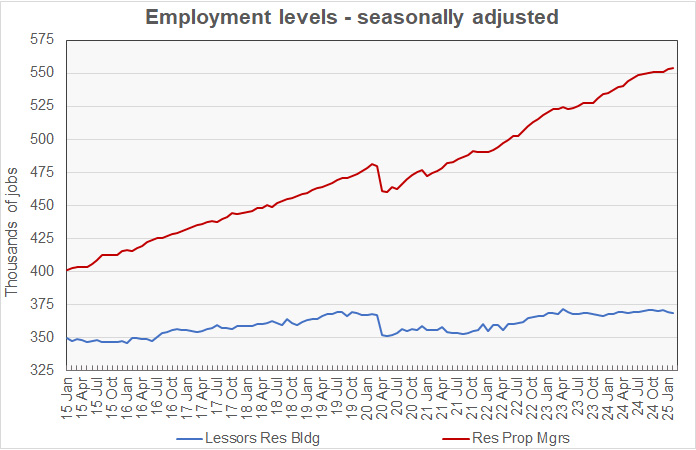
Employment for residential property managers in February was reported to be up by 900 jobs from its revised (+400 jobs) level for January to 553,600 jobs. Employment growth in this category is +3.1 percent year-over-year.
Employment for lessors of residential buildings in February was reported to be down 300 jobs from the unchanged level for January at 368,700 jobs. Employment in this category is up 0.2 percent year-over-year.
Total employment in these two categories of apartment operations jobs combined was reported to be up 0.07 percent from the revised level for last month and up 1.9 percent year-over-year.
Property managers jobs still beat the trend
The final chart, below, presents the employment data in a different format. It normalizes the employment levels in each of the four jobs categories to a reading of 100 for January 2015. It also provides trend lines for the employment growth in each of the job categories we track based on the period from January 2015 through February 2020.
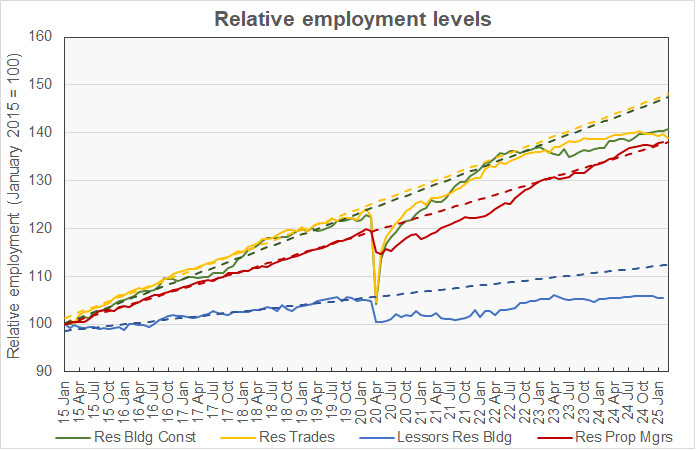
Residential building construction employment is now 4.4 percent below trend. Residential trades employment is now 6.2 percent below trend. Residential property managers employment is 0.3 percent above trend and lessors of residential buildings employment is now 6.1 percent below trend.
The numbers given in the Employment Situation report are seasonally adjusted and are subject to revision. It is common for small adjustments to be made in subsequent reports, particularly to the data for the most recent month. The current Employment Situation report can be found here.







